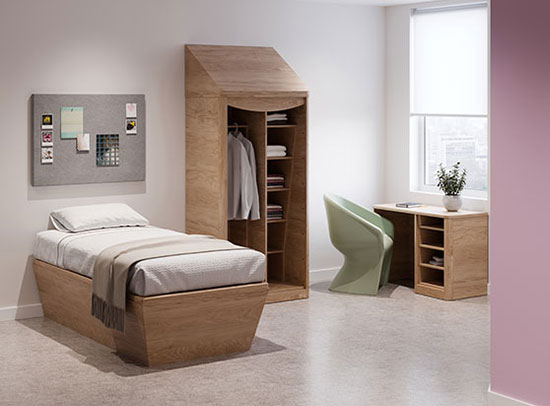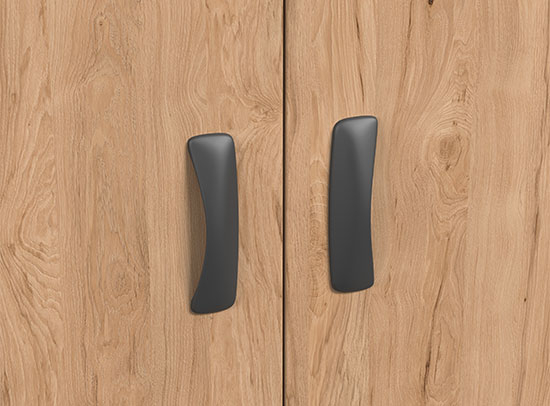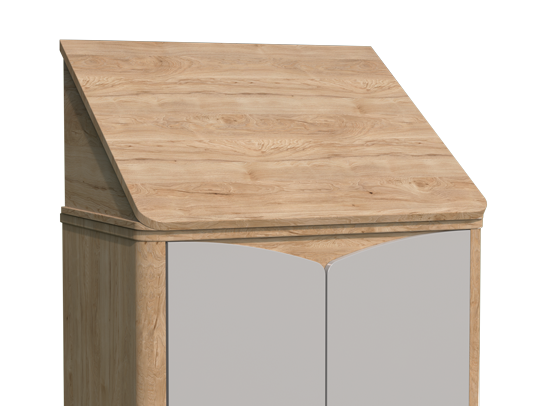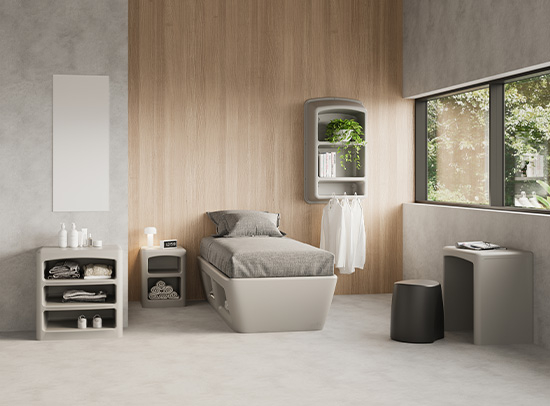Hanging or strangulation is the most common method of suicide for patients in psychiatric care (used in approximately 75% of cases), so minimizing ligature risks is a key area of concern for care providers.

While ligature risks are a concern in all areas, bedrooms are particularly high-risk as regular staff observation is not always feasible.
As manufacturers we understand that even the smallest of details can have a significant impact on safety, and our in-house design team strive to reduce ligature risks wherever possible.

For wardrobes, cupboards and other cabinetry, traditional hinges (fixed at 2 or 3 positions with gaps between them) pose a significant ligature risk. Our products are designed using continuous “piano style” hinges which minimize these risks.

Door handles are another common ligature risk. Products in our Harby Plus range feature handles which slope downwards, and products in our Acumen range feature recessed handles – both approaches are designed to minimize ligature risks.

Traditional wardrobe/cupboard doors often feature a flat top (parallel with the floor) which can also be used to secure a ligature. Curved door tops are used as standard on our Acumen wardrobes which reduces the potential for a ligature to be secured.

As many ligature risks are associated with doors or door furniture, our Harby Plus and Acumen ranges are available in “Open” formats which remove the doors entirely in an effort to minimize ligature risks. Our flagship Ryno® range is designed without doors for the same reason.